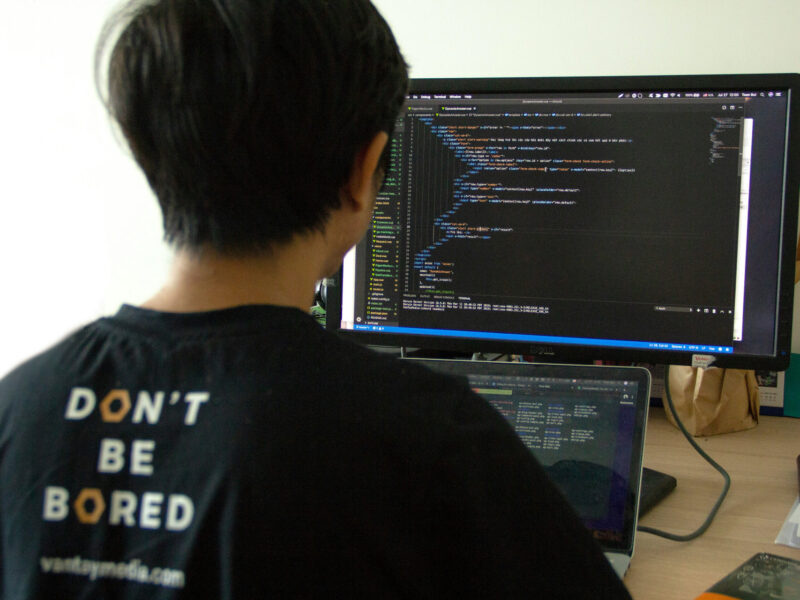The traditional approach to farming reflects labor-intensive practices. Artificial
intelligence-powered solutions dominate this sector, shaping farming to be more precise, less wasteful, and scalable while aligning with traditional practices. AI is reshaping current sustenance and food security practices. AI in agriculture brings a data-driven approach to farming. It is about structured data that goes into building intelligent systems to ensure informed decision-making, all made possible through the meticulous agritech data annotation process.
Despite the modernization of agriculture, major losses in the quality and quantity of crops occur yearly. In this regard, agritech companies and farmers leverage AI to make smarter decisions, optimize yield predictions, and increase crop productivity. Data collection, preprocessing, and a structured format must be maintained to develop and train deep learning algorithms and use cutting-edge technology like computer vision, the internet of things, and geospatial analytics for agricultural best practices.
As report suggests, the global market for AI in agriculture will grow from $1.7 billion to $4.7 billion between 2023 and 2028. This indicates that AI-assisted farming practices are expected to increase in the future. To understand the roadblocks to its adoption, this article explores the challenges facing the agriculture sector and showcases how AI helps to solve them.
Challenges to Agriculture and Solutions AI Brings
The United Nations asserts that alleviating severe poverty and feeding the world’s population is development in the agriculture sector. SDG2 of the UN Sustainable Development Goals states that enhancing agricultural productivity is central to ending hunger, achieving food security, and improving nutrition.
Achieving these goals requires tackling the challenges head-on. Due to their global presence and financial impact, farmers face three issues.
Attack from Pests: Research suggests that pests consume approximately 40% of global agricultural production yearly, resulting in over $220 billion in economic losses and causing at least $70 billion in damages due to attacks by invasive insects. Fruit flies harming orchards and locust swarms destroying African fields are just two examples of the worldwide impact and enormous financial consequences.
Agriculture datasets built from weather reports, historical pest activity, and HD images captured by drones and satellites are advantageous in training machines. AI-powered computer vision models can improve insect pest identification, help predict pest invasions, and identify pests in the field.
Soil Quality and Irrigation: Approximately 95 percent of global food production depends on soil. But when the earth’s soil is degraded, it reduces its capacity to support crop growth. Furthermore, soil degradation harms crop yield, which results in a tremendous financial loss. Water scarcity and inefficient irrigation further worsen agricultural output.
Sustainable farming methods suggest continuous soil health monitoring and analysis for growing crops. Optimizing water use ensures crops receive precisely what they require, cutting waste and increasing productivity. Soil health conditions are analyzed using data from in-ground sensors, farm equipment, drones, and satellites.
This type of soil health analysis aids in irrigation system automation and water demand prediction. For this purpose, agritech data annotation services help train a model capable of efficiently analyzing soil conditions, including moisture content, nutrient levels, and pathogen presence.
Weeds: Weeds are the most significant biotic constraint on agricultural production. Despite modern farming methods, weeds still pose an infestation risk to crop production and diminish their quality. Globally, a 31.5% decrease in plant production due to about 1800 weed species results in annual economic losses of USD 32 billion.
Preventing weeds from competing with crops for resources and reducing herbicide use requires precise identification and removal. With computer vision, drones and robots can now spot weeds among crops with remarkable accuracy by applying herbicides only where needed. Such precision farming practices shield crop yields and reduce the negative impact of chemical overuse. Employing AI in agriculture will make it more sustainable and resource-efficient in the long run.
Weather: Weather remains one of the most critical factors influencing agriculture. Unpredictable rainfall, droughts, temperature shifts, and extreme natural events can drastically reduce crop yields and threaten food security. According to the FAO, nearly 25% of global crop losses are due to weather variability and climate change.
AI helps farmers mitigate these risks through satellite imagery, predictive weather analytics, and IoT-enabled sensors. AI systems can predict rainfall, temperature fluctuations, and disease outbreaks using historical climate data and real-time field conditions.
These insights help in precision agriculture practices, from optimizing irrigation schedules and fertilizer use to planning sowing and harvesting windows. The result is not just mitigating the challenges but also higher productivity and reduced resource wastage, making farming more sustainable and resilient to climate volatility.
Why Does Data Annotation in Agritech AI Matter?
Farming has always been a data-driven activity. The data to annotate spans a wide range of visual, sensor, and textual sources on weather, crop health, soil conditions, and irrigation methods. Accurately labeling these data to train machine learning models is known as agritech data annotation. Adding metadata to this visual and sensor information enables algorithms for precision farming, yield optimization, and long-term sustainability.
AI in agriculture can help produce more predictable harvests. AI can identify areas affected by drought, pests, or diseases. Data annotation lays the foundation for this analysis. In the coming years, agritech data labeling will be used to develop robust models to determine the optimal farm methods to feed a growing population.
To solve this problem, agriculture data annotation companies establish themselves as collaborative partners to AI developers, providing access to data expertise at every stage of developing an agritech model. These annotation hubs provide all the resources a business needs to build a comprehensive analytics model. This model blends engineering and advanced analytics expertise, forming a dedicated service with a team of individuals deeply connected to the agricultural domain.
Conclusion
The future of farming is not merely a competition between tradition and modernity; it is all about the effective convergence of these two. AI in farming is no longer a promise yet to be fulfilled; it is working in full force by redefining how we protect, cultivate, and sustain our food systems. The success of AI systems in agritech depends heavily on quality training data, where data annotation appears as a crucial step between raw agricultural information and actionable intelligence.
Annotation allows AI models to become reliable decision-making partners for farmers by determining whether datasets perfectly represent real-world farming conditions.
With the growing population and food security challenges, the agriculture industry must look forward to high-quality labeled data. Collaboration between farmers, agritech companies, and data annotation experts will be key to creating smarter systems that boost yields and preserve ecosystems for future generations.
In essence, well-annotated data has emerged as a seed, and AI is the harvest where data annotation companies will shape the next farming era.

